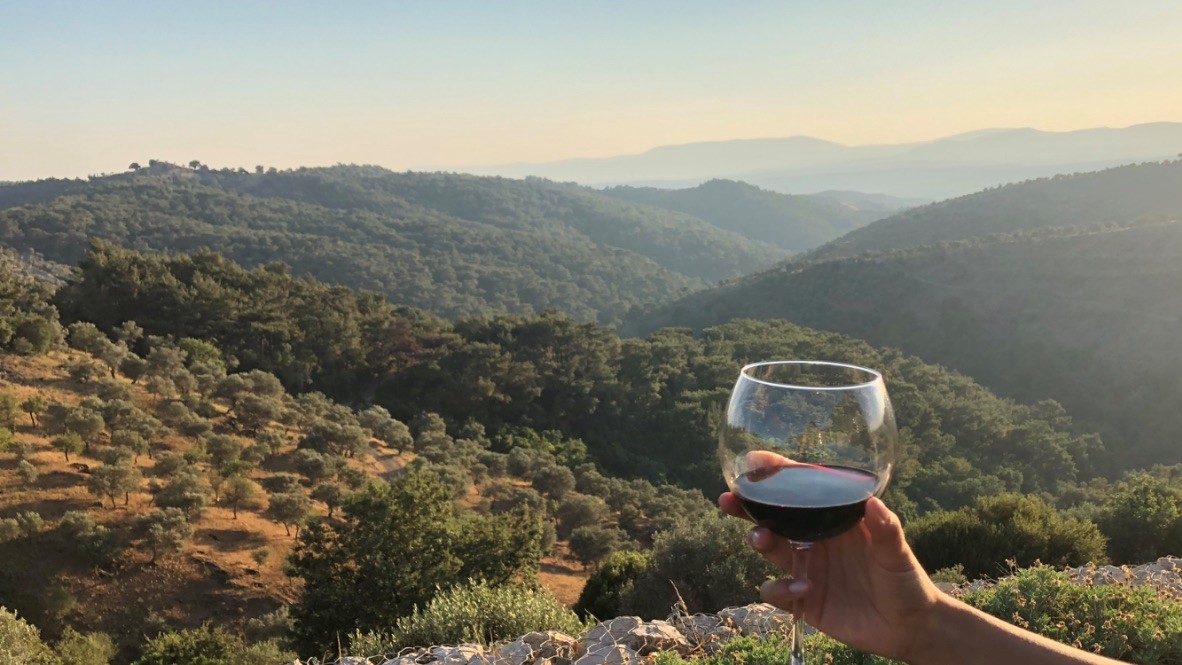
Nestled in the heart of the Aegean Turkish coastline just a short boat ride away from the Greek islands lives a sleepy town which is beginning to develop a rather unusual reputation for the area.
In contrast to the hustle and bustle of Istanbul or the 5 star holiday resorts of Bodrum, the area of Urla is quickly becoming known as the Turkish Tuscany thanks to its viticultural history that spans back to the 7th century BC.
Whilst flying under the radar for many years this local favourite has been developing a vast infrastructure of vineyards and a growing reputation to boot.
There are 5 main vineyards in the region with many more smaller establishments popping up.
The largest and most well-known being Urla Şarapçılık which spans over 350 acres. It was started 15 years ago in a bid to revitalise local grapes that have been part of the peninsula for thousands of years and in the process has won over 150 awards on the national and international stage.
The most popular types of wine (‘şarap’ in Turkish) created here are Cabernet Sauvignon, Merlot and Syrah. This repertoire is supported by local grapes such as Boğazkere and Bornova Misket – which are well worth a try.
One of the newer vineyards, Ayda Bağları, is situated a little further afield than the main wineries of Urla. It is set atop the undulating landscape with incredible views of the region and sunset.
The 30 minute drive from the town centre will really make you feel as though you have been transported to the heart of Tuscany itself. Offering wine, food and accommodation, Ayda offers a perfect mini-break opportunity where you can enjoy the relaxed serenity of the surroundings.
Tours of the regions’ most popular vineyards can be enjoyed by those wishing to explore all the area has to offer. A number of local tour companies focus on the full spectrum of agriculture, cuisine and of course wine.
The accompaniment of a number of charming boutique hotels in the area means that the daytime can be filled with leisurely strolls, glass of Merlot in hand and the evenings with expertly prepared authentic Turkish food.
Restaurants not to miss include Seyhan (for classic meat dishes), Yengeç (for fresh fish and sea-food lovers) and Beğendik Abi (for local classics).
But vineyards are not all the area has to offer. The region of Izmir and the surrounding coast has been home to centuries of change and historical relevance.
Occupied by the Ancient Greeks as early as the 1st millennium, the Roman Empire from the 2nd Century AD and the Ottoman Empire until the end of WW1. The area is brimming with history, heritage sites and the opportunity to venture back through the years. Most notably the ancient Greek site of Ephesus is only a 2 hour drive from Urla and well worth a day trip to see the preserved library and amphitheatre.
Something to be enjoyed is the traditional Turkish breakfast at Denizaltı, set on the waterside it’s a perfect location to start the day.
In Turkey the Sunday breakfast is a time for the whole family to come together before the beginning of a new week, and like with many things here the breakfast is not done by halves.
It is a spread of between 10-20+ hot and cold dishes to be shared by all. This combination of cheeses, eggs, fresh bread, local honey (the best I’ve tasted), fruit, vegetables, filled pastry/ flatbread (börek & gözleme) and Turkish sausage (sucuk) is heaven on earth and will not leave you unsatisfied.
If you enjoy the bitesize joy that is baklava but would like to have something a bit more acceptable to eat in the morning, then börek is a wonderful alternative. Made from a similar type of flaky thin pastry but with the sweetness replaced by the savoury perfection of cheese, spinach, potato or meat.
Just a 45 minute drive from Izmir international airport with direct flights from London between April and October, Urla is relatively quick and easy to get to. This in itself could open it up to a new type of tourist willing to trade in the traditional wine tours of Italy and France for a newer (and cheaper) alternative.
Combining this element with the developing infrastructure and wine cultivation expertise, you can be left in no doubt that the region looks set to continue on its impressive upwards trajectory.
By Alex Pittson